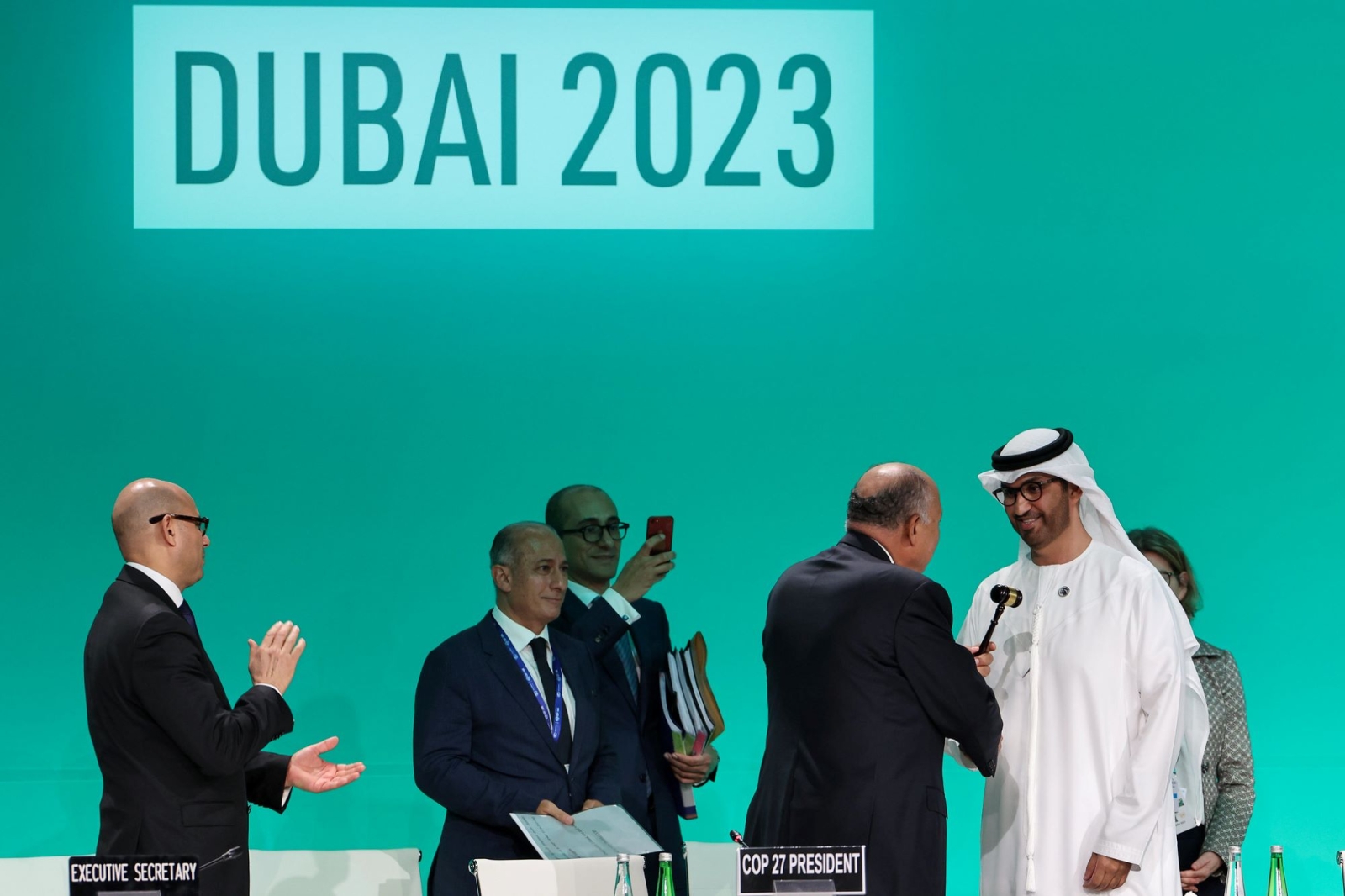A few hours into the start of COP28 – albeit 30 years since small island states began advocating for its creation – the Loss and Damage Fund has been established and will be operational from the same day, the 30th of November. The so-called Loss and Damage Fund was created to provide financial assistance to the most vulnerable countries affected by the impacts of climate change.
A strong start for climate negotiations, which already demonstrates the potential of certain "explosive" developments. The establishment of the fund – and thus the agreement on governance, structure, location, and indications on funding sources that had not been reached during the previous 4 meetings of the Transitional Committee on Loss and Damage – immediately paved the way for delegates' announcements regarding its endowment.
$100 million was pledged by Germany, £40 million (50 million dollars) from the United Kingdom (with an additional £20 million promised for further financing agreements), $17.5 million and $10 million respectively from the United States and Japan. €100 million from Italy. $16 million and $25 million were announced respectively by Canada and Denmark. €133 million (145.7 million dollars) was put on the table by the European Union.
Above all, the immediate announcement of $100 million by the United Arab Emirates, the controversial hosts who, with the establishment of the Fund, enhanced and strengthened their soft power. Perhaps, they are also addressing, at least in part, the accusations from the BBC of November 27th, stating that the president of COP28 and CEO of ADNOC (the Emirati state oil company), Sultan al Jaber, allegedly took advantage of his role to negotiate fossil fuel agreements during preparatory meetings.
"What was promised in Sharm El Sheikh has already been delivered in Dubai," stated Al Jaber. "The speed with which the world has come together to make this Fund operational within a year of its agreement by the Parties in Sharm El Sheikh is unprecedented."
"This is a historic and hard-fought agreement," commented Avinash Persaud, negotiator for developing countries and special climate envoy for Barbados, an island nation suffering on the front lines the effects of the climate crisis. "It demonstrates the acknowledgment that losses and damages caused by the climate are not a distant risk but are part of the lived reality for nearly half of the world's population and that funds for reconstruction and rehabilitation are necessary if we do not want the climate crisis to overturn decades of development in moments."
How does the Loss and Damage Fund work?
The World Bank will be the temporary home of the Loss and Damage Fund for a period of four years. A goal that had been achieved in extremis by the Transitional Committee in early November during the pre-COP in order to overcome the impasse between the demands of so-called developed and developing countries, which objected to the independence of the World Bank. The loss and damage fund will have an independent secretariat with a board of directors consistent with its membership. Furthermore, members of the Transition Committee called for the fund to operate in conformity with the principles of the UNFCCC and the Paris Agreement.
For the fund to be operational, it required $250 million. However, developed countries seem to be aiming for "at least" $100 billion per year in funding for loss and damage by 2030. This figure is considered the "baseline," the minimum essential amount the fund will need. Developing countries assert that the actual need is closer to $400 billion per year.
Contributions to the fund are on a voluntary basis, and the text states that developed countries are "invited" to contribute. Regarding access, all developing countries can directly request resources from the Fund, with a minimum allocation percentage dedicated to the least developed countries and small island developing states. According to the text, periodic independent assessments of the Fund's performance will also be conducted to provide an objective evaluation of outcomes, including activities funded by the Fund, and its effectiveness and efficiency.
This Loss and Damage Fund “can only be the beginning”
“The work is far from over. After the gavel drops at COP28, we cannot rest until this fund is adequately financed and starts to actually alleviate the burden of vulnerable communities.” declared Ambassador Pa'olelei Luteru, President of AOSIS (Alliance of Small Island States), “Success starts when the international community can properly support the victims of this climate crisis, with efficient, direct access to the finance they urgently need.”
The same sentiment is shared by Andreas Sieber, Associate Director of Policy at 350.org, an international environmental movement founded in 2007 by Bill McKibben. "We welcome the fund, but wealthy countries promptly sought to marginalize it by setting a very low threshold for contributions. The needs of affected communities are in the hundreds of billions, not millions. This can only be the beginning and must be urgently followed by a substantial increase in donations”.
"In a praiseworthy move, the host of the COP28 climate conference pledged $100 million to the Loss and Damage Fund, followed by several wealthy nations announcing their own financial support," commented Harjeet Singh, Head of Global Political Strategy of Climate Action Network International. "While this funding is invaluable in jump-starting the Fund's activities, it is important to recognize that the costs of rebuilding after the devastating effects of climate disasters amount to hundreds of billions of dollars annually. Wealthy countries, given their significantly greater historical responsibility, must do more on a scale proportionate to their impact on emissions heating the planet."
This article is also available in Italian / Questo articolo è disponibile anche in italiano



